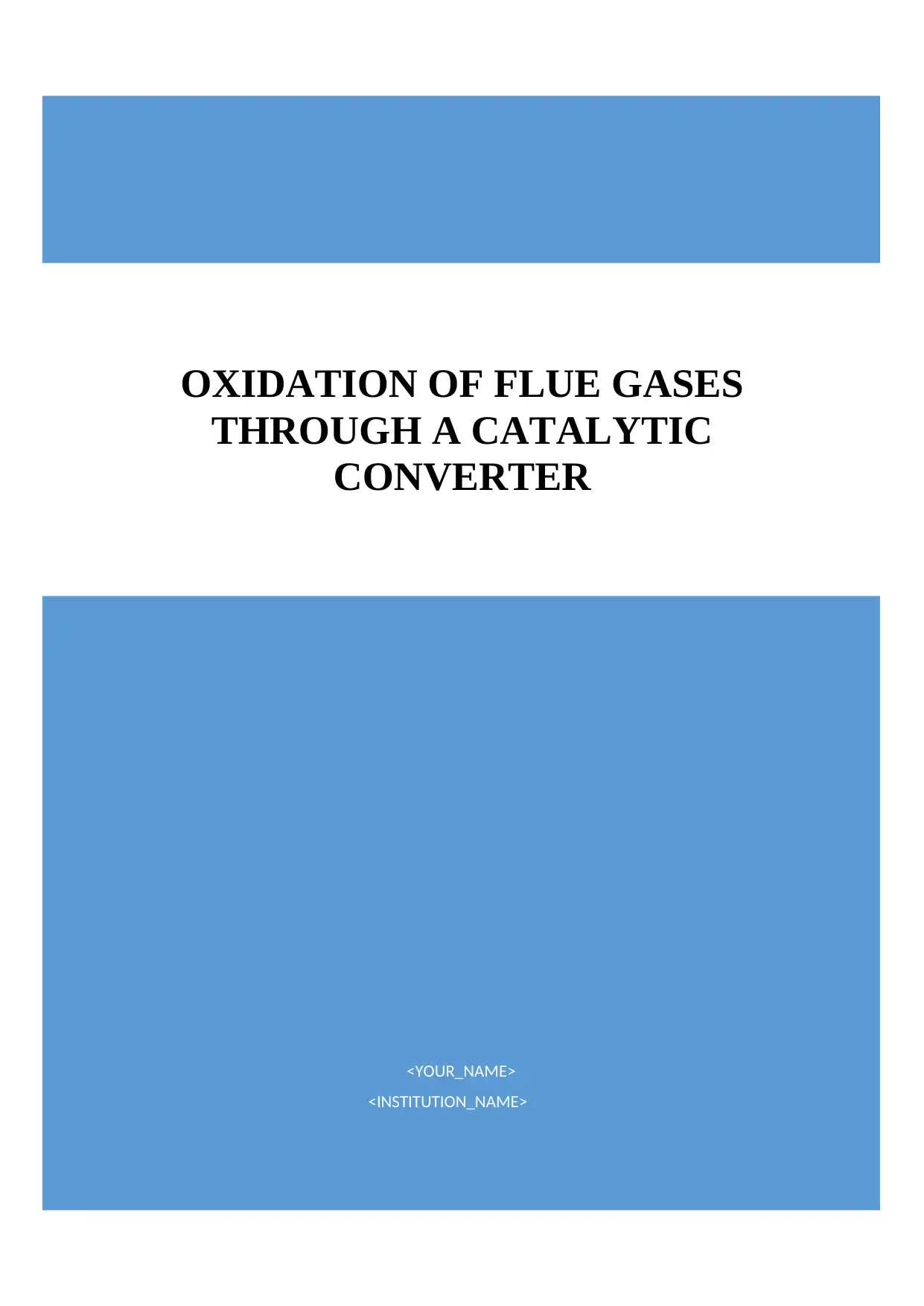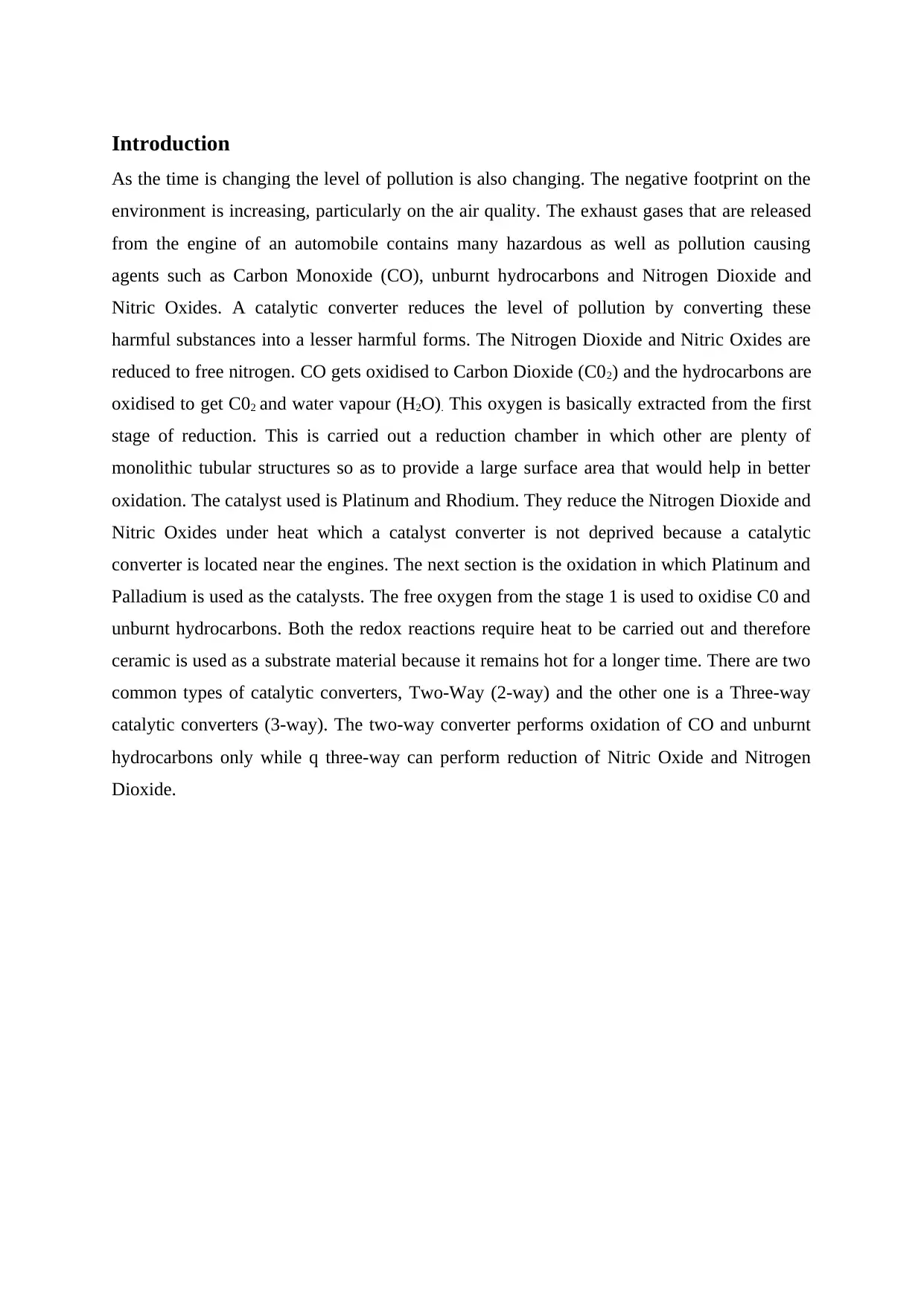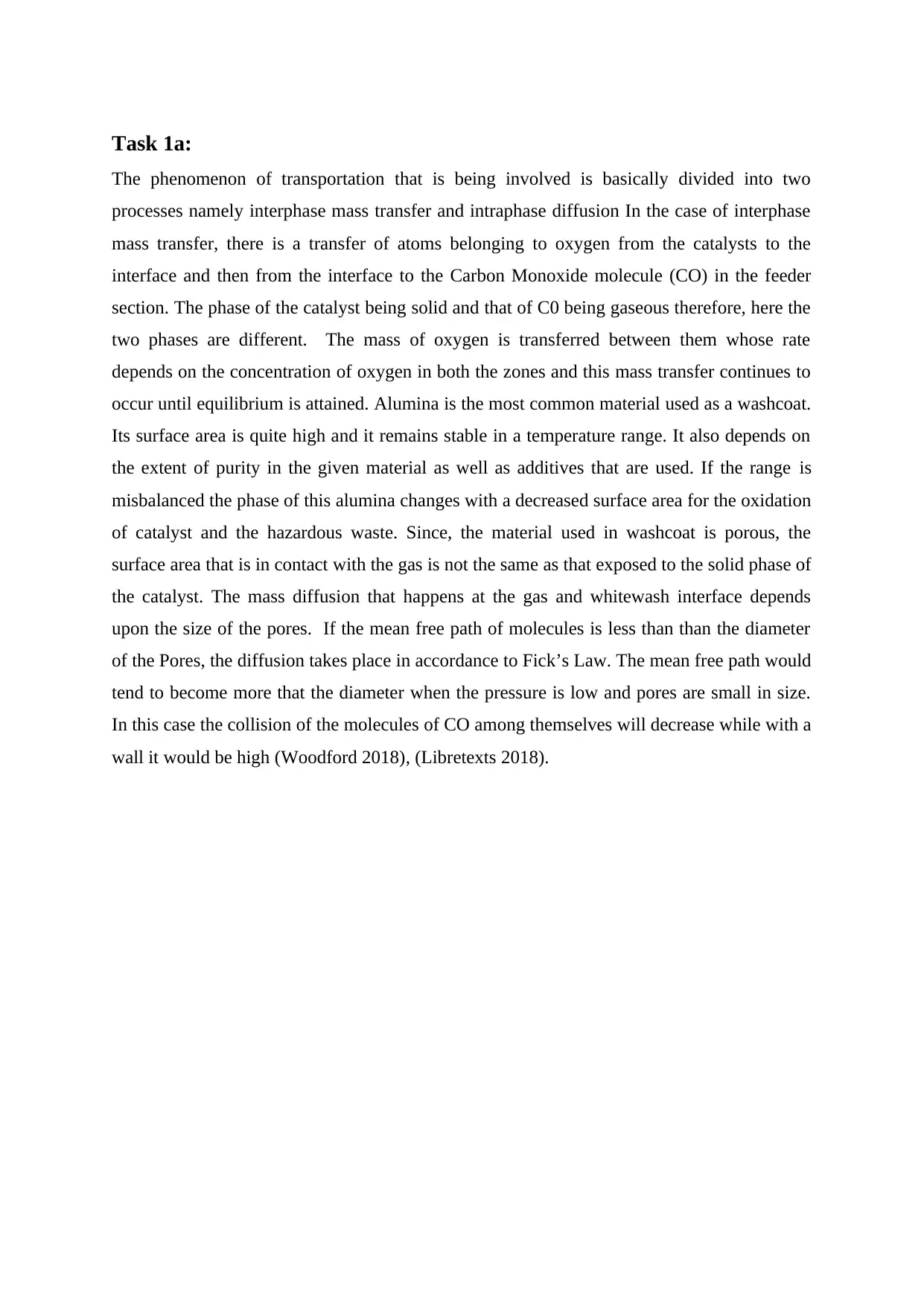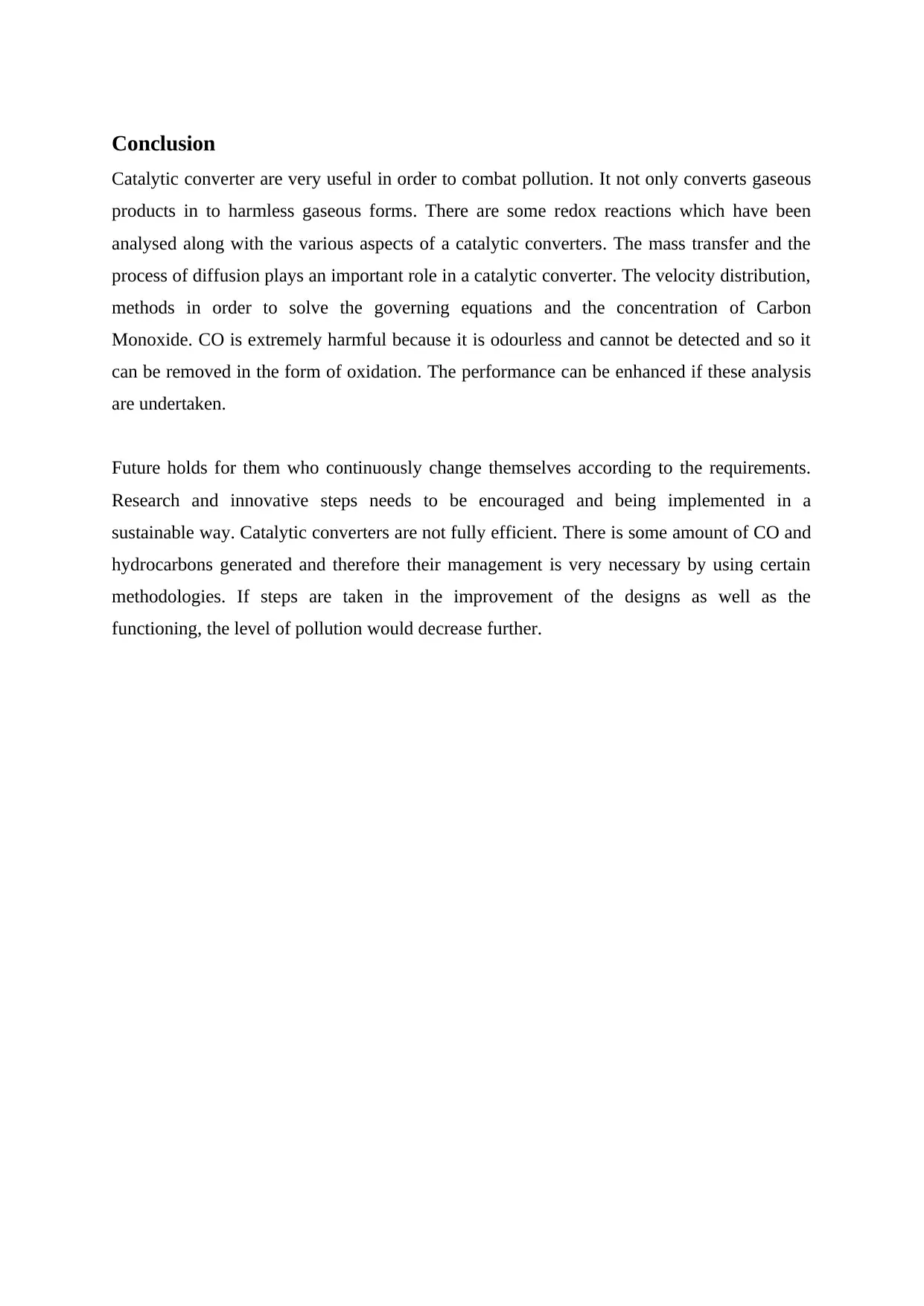Analysis of Flue Gas Oxidation in Catalytic Converters - ENGR 300
VerifiedAdded on 2021/10/12
|5
|912
|106
Homework Assignment
AI Summary
This assignment analyzes the oxidation of flue gases within catalytic converters, focusing on the reduction of pollutants like carbon monoxide, unburnt hydrocarbons, and nitrogen oxides. It details the operational principles of catalytic converters, including the role of catalysts such as platinum, rhodium, and palladium in facilitating redox reactions. The paper discusses the two main types of catalytic converters (two-way and three-way) and explains the phenomena of interphase mass transfer and intraphase diffusion. The interphase mass transfer involves the transfer of oxygen from the catalysts to the carbon monoxide molecules. The role of alumina as a washcoat material is also discussed. Furthermore, it delves into the significance of diffusion at the gas-washcoat interface, and how pore size impacts the process. The conclusion emphasizes the effectiveness of catalytic converters in combating pollution, highlighting the importance of continuous research and development to improve their design and functionality. References from sources like Libretexts and Explain That Stuff are included to support the analysis.
1 out of 5






![[object Object]](/_next/static/media/star-bottom.7253800d.svg)